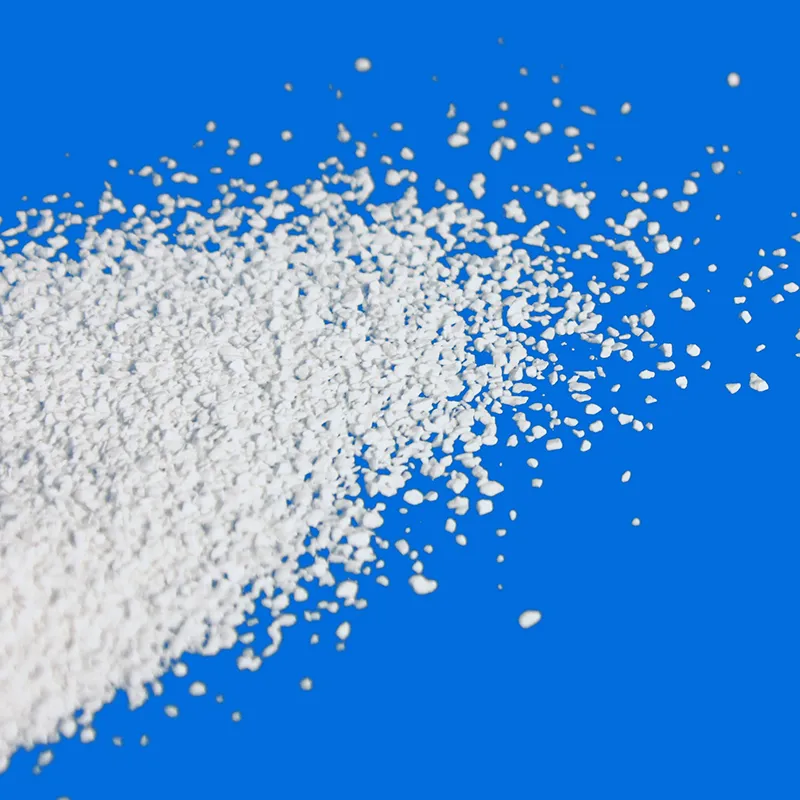
Exploring the Uses and Benefits of Acidity Regulator 296 in Food Products
Understanding Acidity Regulator E296 A Comprehensive Overview
Acidity regulators play a crucial role in the food industry, helping to maintain the pH levels of various products and enhancing their flavor, safety, and shelf life. One such prominent acidity regulator is E296, commonly known as malic acid. This organic compound is naturally found in various fruits, most notably in apples, and serves as an essential additive in food processing. This article will delve into the properties, uses, safety, and benefits of E296, providing a comprehensive overview of its significance in the food world.
What is E296?
E296, or malic acid, is a dicarboxylic acid with the molecular formula C4H6O5. Its naturally occurring form is often associated with the tartness of fruits, giving foods a refreshing and tangy taste. Malic acid is essential in various metabolic processes within the body and is produced naturally by many plants. In the food industry, it is synthesized for use as a food additive, recognized for its ability to regulate acidity levels effectively.
Uses of E296 in the Food Industry
Malic acid serves multiple purposes in food production
1. pH Regulation E296 acts as an acidity regulator, allowing manufacturers to control the sourness of their products while maintaining desired pH levels. This control is vital for preserving the overall quality and safety of food items.
2. Flavor Enhancer Besides regulating acidity, malic acid enhances the flavor profiles of foods and beverages. It provides a pleasant tartness that can improve the taste of products such as soft drinks, candies, and baked goods.
3. Preservation By lowering the pH and creating an environment less conducive to microbial growth, E296 helps extend the shelf life of perishable products. This makes it a popular choice among manufacturers looking to improve product longevity without sacrificing taste.
4. Nutritional Supplement Malic acid is sometimes included in nutritional supplements, as it is involved in energy production within the human body. Its inclusion in various health products speaks to its versatility beyond mere food additives.
acidity regulator 296

Safety and Regulations
E296 is generally recognized as safe (GRAS) by food safety authorities, including the U.S. Food and Drug Administration (FDA) and the European Food Safety Authority (EFSA). Studies have indicated that malic acid does not pose significant health risks when consumed within established dietary guidelines. However, as with many food additives, excessive consumption may lead to gastrointestinal discomfort. Regulatory bodies have set acceptable daily intake levels to ensure consumer safety.
Benefits of E296
Incorporating E296 into food products comes with several advantages
1. Natural Source Since malic acid is naturally occurring in fruits, its use in food products aligns with the growing consumer preference for natural ingredients. It provides an appealing option for manufacturers aiming to cater to health-conscious consumers.
2. Versatility Its multifunctional qualities allow malic acid to be employed across various food categories, from beverages to dairy products and even in processed meats.
3. Enhanced Consumer Experience By improving flavor and preserving freshness, E296 contributes to a better overall experience for consumers, leading to higher satisfaction and repeat purchases.
Conclusion
E296, or malic acid, stands out as a vital acidity regulator in the food industry, playing a key role in flavor enhancement, preservation, and nutritional support. Its natural origins and safety profile make it an ideal choice for manufacturers committed to delivering quality products. As consumer preferences continue to evolve towards healthier, natural options, the importance of additives like E296 will likely remain significant, ensuring that food products not only taste great but also meet safety and nutritional standards. Understanding the roles and benefits of such additives is essential for both producers and consumers aiming for informed choices in their culinary experiences.
-
Aluminum Hydroxide: Quality Gels & Dried Gel AntacidNewsAug.31,2025
-
Buy High-Quality Trichloroisocyanuric Acid for Sale | TCCA 90% SupplierNewsAug.30,2025
-
Pure Sodium Dichloroisocyanurate Dihydrate | Powerful DisinfectantNewsAug.29,2025
-
Industrial Chemicals: Quality & Purity for Every IndustryNewsAug.28,2025
-
Nitrile Rubber Honoring Strict Production StandardsNewsAug.22,2025
-
Aspartame Ingredients Honoring Food Safety ValuesNewsAug.22,2025
-
Fertilizer for Balanced Plant NutritionNewsAug.22,2025
Hebei Tenger Chemical Technology Co., Ltd. focuses on the chemical industry and is committed to the export service of chemical raw materials.
-

view more DiethanolisopropanolamineIn the ever-growing field of chemical solutions, diethanolisopropanolamine (DEIPA) stands out as a versatile and important compound. Due to its unique chemical structure and properties, DEIPA is of interest to various industries including construction, personal care, and agriculture. -

view more TriisopropanolamineTriisopropanolamine (TIPA) alkanol amine substance, is a kind of alcohol amine compound with amino and alcohol hydroxyl, and because of its molecules contains both amino and hydroxyl. -

view more Tetramethyl Thiuram DisulfideTetramethyl thiuram disulfide, also known as TMTD, is a white to light-yellow powder with a distinct sulfur-like odor. It is soluble in organic solvents such as benzene, acetone, and ethyl acetate, making it highly versatile for use in different formulations. TMTD is known for its excellent vulcanization acceleration properties, which makes it a key ingredient in the production of rubber products. Additionally, it acts as an effective fungicide and bactericide, making it valuable in agricultural applications. Its high purity and stability ensure consistent performance, making it a preferred choice for manufacturers across various industries.





